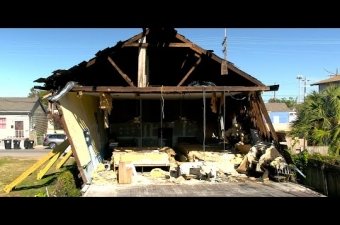Perseverance Society Hall
1644 Villere St.New Orleans LA 70116
The Perseverance Society Hall was one of the venues where the jazz first emerged around the turn of the 20th century, and a hub of the cultural life of the Seventh Ward. (It is not to be confused with Perseverance Masonic Lodge No. 4, also referred to as “Perseverance Hall,” which is located in Louis Armstrong Park.)
The building here on N. Villere Street opened in 1880 as the headquarters of La Société de la Perseverance, a mutual aid association formed by Creoles of color before the Civil War. At a time when Black people were denied mainstream insurance, members of the society supported each other, paying dues in exchange for medical and burial benefits.
The Perseverance Society patronized the city’s top musicians, hiring brass bands for its members’ funeral processions and dance bands for functions at the hall. The society also rented the venue to organizations without facilities of their own, which hosted their own events with music. In the early 1900s the group generally regarded as the first to play jazz, led by cornetist Buddy Bolden, was among the performers.
The hall was built before amplification, so bands performed on an elevated platform to project their sound over the crowd. Volume was no issue for Bolden, though. His horn was audible in the nearby home of the Barbarins, a storied musical family. When the drummer, composer, and bandleader Paul Barbarin was a child, he heard the music coming from Monday night banquets at Perseverance Hall. He recalled his mother telling him that Bolden played so loudly that he’d “blow his brains out.” Tragically, Bolden suffered a mental breakdown that ended his career prematurely in 1907.
Cornetist Freddie Keppard took the helm of Bolden’s band and continued playing at the hall. Some of the biggest names in traditional jazz took the bandstand here, too. They include Joe “King” Oliver, Louis Armstrong’s hero and mentor; Sidney Bechet, the clarinet and soprano saxophone virtuoso who grew up down the street; Buddy Petit, Chris Kelly, Henry “Kid” Rena, “Big Eye” Louis Nelson, and “Wooden” Joe Nicholas.
The building was renovated in the 1920s, when the current Spanish Mission style façade was added along with a second story camelback. By 1950 the Perseverance Society appeared mainly in death notices of aged members, and the Holy Aid and Comfort Spiritual Church of Eternal Life bought the building to hold its services. Spiritual churches, which merged religious practices rooted in Africa with a range of Christian traditions, had a substantial following among Black New Orleanians in the mid-20th century.
While the congregation here still has the name “Spiritual Church,” Pastor Harold A. Lewis has led more mainstream services here since taking over in 2005. That year Hurricane Katrina damaged the camelback, and the rear of the building was being renovated when Hurricane Ida hit in 2021. The damage was so severe that preservationists had to demolish it to save the rest of the structure.
Pastor Lewis is raising funds to rebuild it, and hopes to make the church available as a multipurpose event space for the neighborhood, much as the Perseverance Society Hall was originally. You can learn about and contribute to that effort here.
Videos

This video tells the history of the Holy Aid & Comfort church and Perseverance Hall. It was produced between Hurricane Ida in 2021 and its collapse in 2022.
Video by A Closer Walk and WWOZ.
This video tells the history of the Holy Aid & Comfort church and Perseverance Hall. It was produced between Hurricane Ida in 2021 and its collapse in 2022.
Images























